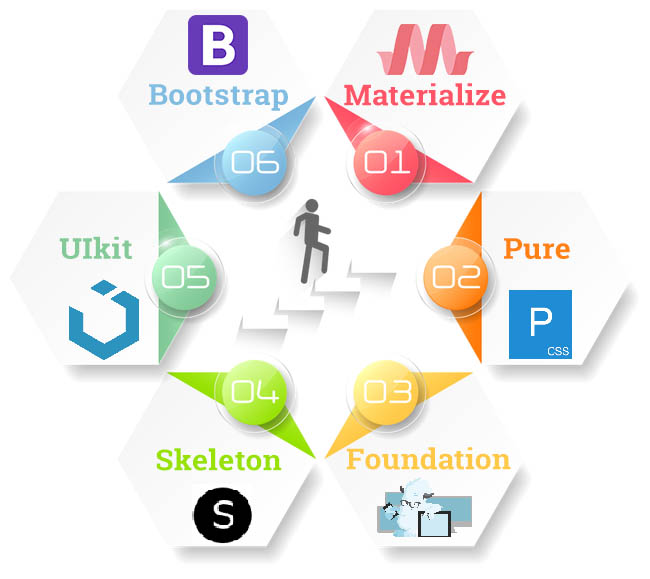Insightful Updates
Stay informed with the latest news and trends.
CSS Frameworks: Your Secret Weapon for Faster Development
Unlock rapid development with CSS frameworks! Discover how these essential tools can skyrocket your productivity and streamline your workflow.
Top 5 CSS Frameworks to Supercharge Your Web Development
In the ever-evolving world of web development, utilizing the right tools can significantly enhance your workflow and the quality of your projects. CSS frameworks are essential for developers looking to streamline their design process and ensure a responsive layout. In this article, we will explore the top 5 CSS frameworks that can supercharge your web development, providing you with the necessary tools to create stunning, efficient websites.
- Bootstrap - Possibly the most popular CSS framework, Bootstrap offers a comprehensive set of pre-designed components and a mobile-first approach.
- Foundation - Known for its flexibility and customizability, Foundation is perfect for creating responsive layouts.
- Bulma - A modern CSS framework based on Flexbox, Bulma provides a clean and minimal design.
- Tailwind CSS - With its utility-first approach, Tailwind CSS allows for rapid design and customization, making it a favorite among developers.
- Semantic UI - This framework focuses on human-friendly HTML, enabling developers to write more understandable code.

How CSS Frameworks Can Save You Time and Enhance Your Design
CSS frameworks are pre-prepared libraries that help streamline the design process, allowing developers to create stunning websites more efficiently. By utilizing a framework, you can avoid the tedious task of writing CSS from scratch, significantly reducing your workload. These frameworks often come equipped with a variety of built-in styles and components, such as buttons, forms, and grid systems, making it easy to achieve a professional look without extensive design skills. This not only saves you time but also encourages a uniformity in design that enhances the overall user experience.
Moreover, using a CSS framework can improve your design by ensuring that your website is responsive and mobile-friendly. Most modern frameworks include responsive design capabilities out of the box, allowing your site to adapt seamlessly to different screen sizes. Additionally, many frameworks offer customization options, enabling you to tailor the aesthetics to fit your brand while still taking advantage of the time-saving features. This combination of speed and flexibility makes CSS frameworks an invaluable asset for any web development project.
What to Consider When Choosing the Right CSS Framework for Your Project
When embarking on a new web project, choosing the right CSS framework is crucial for ensuring that your design is both aesthetically pleasing and functional. There are several factors to consider, including project requirements, team expertise, and the specific features each framework offers. For instance, evaluate whether you need a framework that provides a mobile-first approach or one that emphasizes responsiveness. Additionally, consider the learning curve associated with each framework; a more complex framework may hinder productivity if your team lacks experience with it.
Another key aspect to analyze is the community and support surrounding the CSS framework. A framework with a strong community will typically offer better documentation, more tutorials, and active forums where you can seek help. Furthermore, look into the framework's performance metrics; some frameworks come with bloat and excess features that could slow down your site. By focusing on the right CSS framework that aligns with your project goals, you can ensure a streamlined development process and a better user experience.